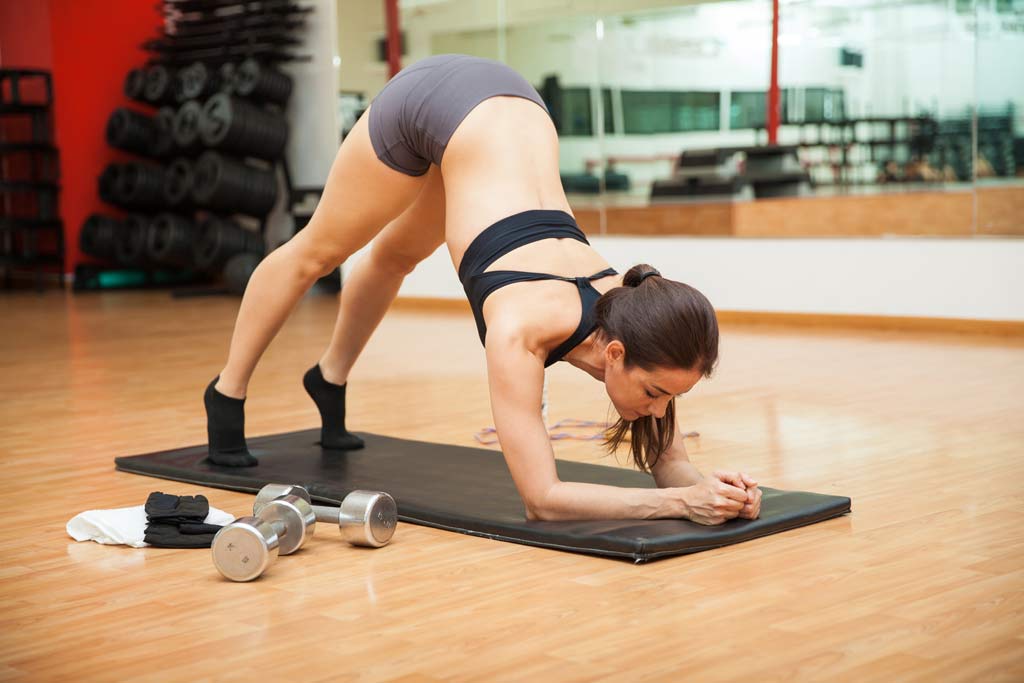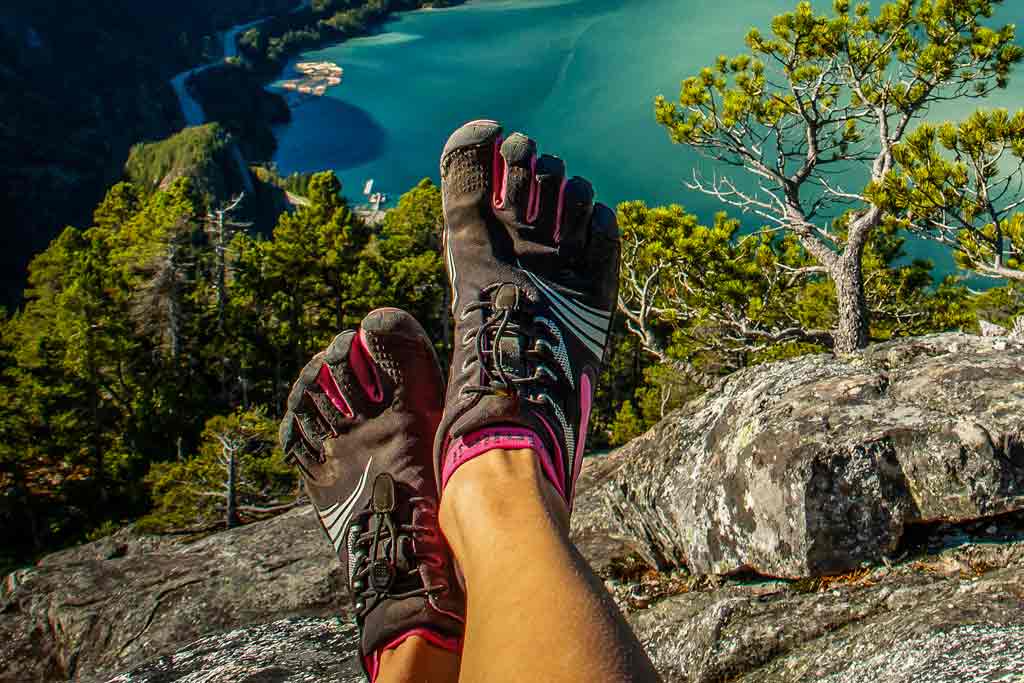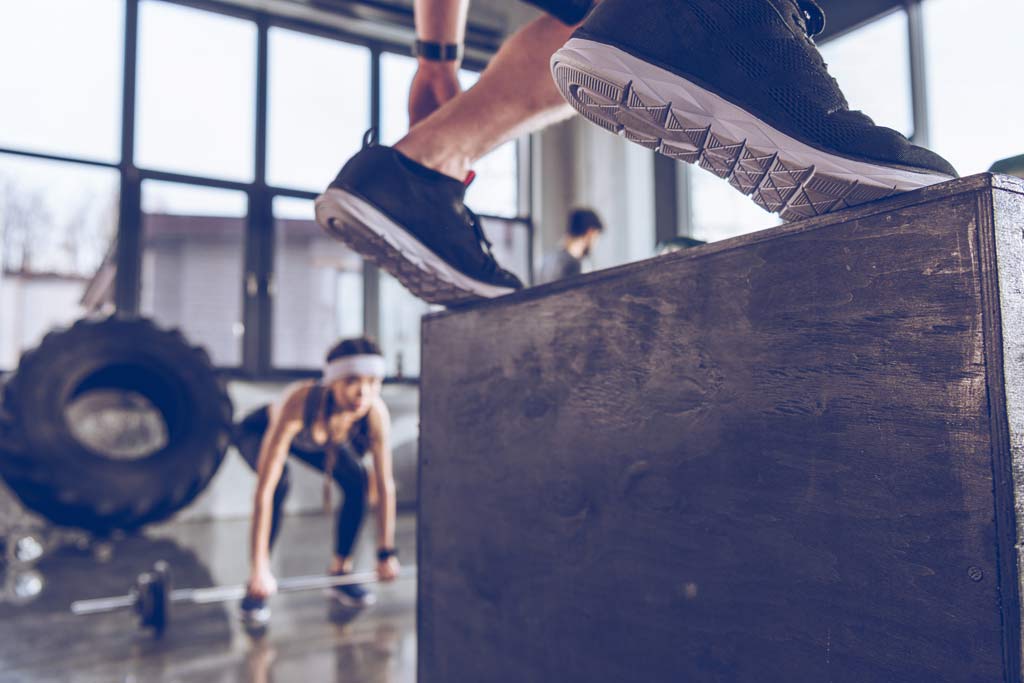Minimalist and barefoot shoes are a fantastic option for metabolic conditioning, weightlifting and calisthenics.
With maximum ground feel and improved body awareness, it’s easy to see why minimalist workout shoes are the best option for many training types. But with such variety of shoes, and even controversy over their claims, it’s hard to know what this barefoot trend is all about.
What is a minimalist shoe?
A minimalist shoe is one that relies on the foot’s natural mechanics for movement and shock absorption, and provides little to no cushioning or support.
Minimalist and barefoot enthusiasts attest that the human foot is capable of doing almost everything we need. This includes jogging, long distance running, hiking, jumping, playing, walking, etc. We just need to allow our feet to develop the strength and support we need. Doing so can improve balance, alignment, and comfort.
However, being completely barefoot has its problems. For one, it can be cold. For another, it might hurt the soles of our feet to go running on pavement, hot sand, or a rocky beach. And, of course, it’s dirty.
Minimalist shoes, therefore, seek to replicate the barefoot experience as much as possible while still protecting the feet.
Minimalist shoes vs. barefoot shoes.
This post may contain affiliate links. Please see my full disclosure here.
There’s no standardized definition of what a “minimalist shoe” or a “barefoot shoe” is. You can do a search and see some that look like feet with the toes separated, and others that look like regular training shoes.
In general, however, it seems that a barefoot shoe is a more extreme category of a minimalist shoe. Barefoot shoes try to not interfere with the foot’s natural mechanics at all, and just provide protection and traction. Minimalist shoes can be as extreme as the barefoot shoes, but they can also be closer to a modern “normal” shoe, but with less cushioning.
So, as I see it, all barefoot shoes are minimalist, but not all minimalist shoes are barefoot. For the purpose of this article, the terms will be mostly interchangeable.
How minimalist and barefoot shoes are different from regular athletic shoes.
There are a few main components that make minimalist shoes different:
- Little to no cushioning. If the purpose is to support the foot as it is naturally built, then cushioning needs to be kept to an absolute minimum. This means shock absorption is left to the joints, ligaments and tendons in the foot, ankle and leg. Also, the shoes provide no arch support. The sole is thin, though thickness varies on brand and shoe purpose.
- Little to no heel drop. The “heel drop” is the difference between the heel and ball of the foot. Most shoes, athletic or not, have a somewhat significant heel drop, for cushioning or style. This places your body a bit out of natural alignment, as you have to lean back slightly to stay upright if the heel is raised. Minimalist shoes have no heel drop, putting your feet at a more natural level.
- Wide toe box. Shoes tend to pinch together at the top, squeezing the toes. Minimalist shoes depend on the toes’ ability to splay out for balance, so they need a wide area for the toes to spread.
- Flexible sole. Minimalist and barefoot shoes have a sole that moves on all planes with the foot. Conventional shoes are much stiffer.
- Lightweight. Minimalist and barefoot shoes are as light as possible, naturally.
Why use minimalist workout shoes?

Why? Why do you go barefoot? Because it’s comfortable! The most obvious reason to wear minimalist shoes is the immediate comfort they provide. The minute you put them on, you see that they are extremely comfortable. It’s like walking around barefoot—kind of. Imagine walking barefoot around the grocery store? At work? At school? Kinda cool, right?
Another main reason to wear barefoot shoes is the comfort and re-alignment you gain after wearing them for a prolonged period. People claim that chronic pain in their feet, legs, knees, hips and back go away after switching to barefoot shoes. Because the body is forced to walk and run with a more natural gait and at a natural level, it also prevents further injury.
Running in barefoot shoes is a polarizing topic, but many claim that once you build up the strength needed to run in barefoot shoes, it can be much easier and pain-free.
Why minimalist workout shoes are best for metabolic resistance training and conditioning.
My favorite reason to go barefoot is the connection to the ground and your body that you gain, especially when lifting weights and exercising.
When swinging kettlebells or sandbags around, it helps to have a firm and stable understanding of your center of gravity as it shifts to correspond with the weight. Furthermore, if you have shoes with toe pockets, you have the added stability of your individual toes to splay out and support you.
With calisthenics, which so often depends on agility and balance as well as strength, the added subtlety of balance is extremely helpful.
If you’re performing a lot of plyometrics, especially something where you might be shifting back and forth quickly, you want a shoe that’s secure. You don’t want your foot to be slipping inside. Minimalist shoes, especially Vibram FiveFingers (sometimes shortened to VFF shoes), are a tight fit—like a glove. This allows you to shift directions, jump up and down, and propel forward with little friction inside the shoe.
And if you’re into metabolic conditioning, or metabolic resistance training, which incorporates all of the above, barefoot or minimalist shoes will give you added balance, ground feel, stability, comfort and security that you need. It’s a win all around!
What are minimalist shoes good for?

Minimalist shoes can be worn for anything, really. They’re great for everyday casual wear, walking, training, calisthenics, tennis, sports, even running. Yeah, you can run marathons in minimalist shoes.
There’s a guy who must be in his 60s or 70s that I see frequently running around the park by my house—in sandals.
By contrast, the modern shoe is designed to support, protect and cushion. But barefoot enthusiasts will tell you that the human body is already designed to perform any activity. The problem is that after a lifetime of wearing cushiony shoes (I like to call them “pillow feet”), we don’t have the strength in our feet, muscles and ligaments to hold up very long while barefoot.
Therefore, when undergoing something seriously high impact or lengthy (like running), you should probably ease into the barefoot lifestyle to avoid pain and injury.
Are minimalist shoes dangerous?
No, they’re not dangerous.
Nay-sayers of barefoot shoes often point to the lack of arch support as a reason not to wear them. But studies show that arch support is mostly overrated. You don’t necessarily need it for excessively high arches or flat feet, and if your arches are normal, you don’t really need it at all.
What can be dangerous is how you use the shoes. If you go for a five-mile run in barefoot shoes after a lifetime of wearing cushioned and supportive shoes, then you may find your legs and feet sore and painful. This can happen even if it feels amazing during that first run (I’ve had a few friends this happened to).
When using barefoot or minimalist shoes for a calisthenics or weightlifting workout, however, you probably don’t need to transition much at all. There won’t be too much impact on your feet, and you’ll love the added connection to your center of gravity that you experience.
Just listen to your body, and perhaps a podiatrist if you need one. Also, go slowly if you transition into barefoot shoes.
Top minimalist workout shoes.
There are many options out there for barefoot and minimalist workout shoes. There are those with toe pockets, those that are sandals, and those that look like “normal” shoes. What works for you can really only be decided by you and what fits your feet and works for your body. However, here are the top choices of barefoot and minimalist workout shoes out there on the market today, from personal and secondhand experience.
I’ve listed the weight (for one single shoe), the heel drop, stack height and cost for each of our top choices. The “stack height” is the thickness of the outer and insole together. Or, more specifically, the distance from the bottom of your foot to the ground. Cost will change, of course, but is accurate as of this posting.
Vibram V-Soul.


Vibram is the number one name in barefoot shoes, and it’s easy to see why. Not only do they make the shoe soles for their own FiveFingers and other shoes, you’ll find a Vibram sole on other brands of shoes, including many of Merrell’s top-rated minimalist shoes, including those below.
The FiveFingers look is a bit… funky. It takes some getting used to. But once you try them, it’s a game changer. You get the natural weight distribution and alignment that you get barefoot, but with a touch of needed protection.
The XS Trek sole is thin enough to have excellent understanding of the ground and your center of gravity, but enough that you won’t hurt the bottoms of your feet. The top provides minimal protection, just over the toes and sides of the foot, like a ballet slipper. This is enough for many indoor lifting activities, even giving enough to cover for things like bulgarian squats or roll-ins on a ball. Because this leaves most of the top of your foot bare, it helps give the illusion of even more barefootedness. The stylish strap across the top helps keep the shoes securely in place if you’re shifting positions quickly.
Because of the balletic feel, these are also a favorite for yoga or pilates, if having actual bare feet isn’t an option.
| Vibram V-Soul | |
| Weight: | 3.2oz |
| Heel drop: | 0mm |
| Stack height: | 5mm |
| Cost*: | $94.95 |
Vibram KSO Evo.


A bestseller and favorite Vibram FiveFingers shoe, the KSO Evo is lightweight with a thin and flexible sole (the XS Trek, the same as on the Soul), but with a thicker top portion that’s hearty enough to stand up to the elements. It also features lacing to help keep the shoe extra snug.
The KSO Evo is a fantastic shoe to take to the park for a workout, and many find them a favorite for walking or even running on even terrain.
Note that this shoe runs small, so size up on this one.
| Vibram KSO Evo | |
| Weight: | 3.5oz. |
| Heel drop: | 0mm |
| Stack height: | 5mm |
| Cost*: | $104.95 |
Merrell Vapor Glove.


The Vapor Glove is similar to the Vibram examples above, and for a few reasons. For one, the sole actually is Vibram: the Vibram Ecostep, to be exact. While the sole is a touch stiffer than the FiveFingers sole, the Merrell Vapor Glove is a true minimalist and barefoot shoe. It just doesnt have the individual toe pockets.
If the toe separation is a bit too weird or creepy, you’ll keep your dignity in check while still enjoying the benefits of a truly barefoot shoe. the Merrell Vapor Glove has a nice wide toe box for the toes to properly splay, and it’s a wonderfully secure, flexible fit with zero heel drop.
The Vapor Glove gives you excellent ground feel for calisthenics or weight lifting, but many prefer it also for running or everyday wear. The nice thing is, they’re not such a crazy (or some say “creepy”) thing to wear in public.
While these look like “normal” shoes, please note that they are meant to fit like a… well, a glove. So the fit should be rather snug.
| Merrell Vapor Glove | |
| Weight: | 5oz. |
| Heel drop: | 0mm |
| Stack height: | 6.5mm |
| Cost*: | $89.95 |
Merrell Trail Glove.


If you like the Merrell Vapor Glove but need a little more heft, or a transition to true barefoot shoes, the Trail Glove is your shoe. Designed to support the foot while running on trails, it provides some padding and support, though not much as a “normal” shoe. While the sole is the same Vibram EcoStep sole as the Vapor Glove, it’s a bit thicker with more traction to help protect your feet. This is the only item on this list that I would call minimalist—not barefoot—workout shoes.
However, like all the other truly barefoot shoes, it has a zero drop heel, giving you a natural level and balance.
| Merrell Trail Glove | |
| Weight: | 6.9oz. |
| Heel drop: | 0mm |
| Stack height: | 11.5mm |
| Cost*: | $89.95 |
Xero Shoes Genesis sandals.


Honestly, barefoot, as in barefoot barefoot, is best for calisthenics. You get full freedom of movement, maximum ground feel, and there’s no outside weights that you need protection from.
However, if you’re outside and just need a sole, but still want that barefoot feel (and look), try the Xero Shoes Genesis sandals. Designed after the running sandals of the Tarahumara and other indigenous tribes, it’s meant to be as close to barefoot as possible. And unlike flip flops, they secure to your entire foot, and move and flex with movement.
These sandals are flexible, lightweight, durable, and adjustable. You can also cut them to the exact length you need. And while it seems crazy, many people actually run in these. And run marathons in these.
| Xero Shoes Genesis Sandals | |
| Weight: | 4oz. |
| Heel drop: | 0mm |
| Stack height: | 5mm |
| Cost*: | $47.99 |
Honorable mention:
Vibram Furoshiki.

Okay, okay. I love Vibram. I’m sorry. But I have to mention one more: the Furoshiki.
Named after a Japanese folding art, the Furoshiki is a sole with “wings” that wraps over the upper portion of your foot.
They are extraordinarily comfortable and stylish. Like, “billionaire in a James Bond movie” stylish. The only reason these are not on the main list is that they aren’t really conducive to training or exercise. They don’t secure to your foot as well as the FiveFingers. However, for walking, stationary training and weight lifting, or just casual wear in summer or cooler weather, these shoes are… pretty darn cool.
| Vibram Furoshiki Sneaker | |
| Weight: | 4.7oz. |
| Heel drop: | 0mm |
| Stack height: | 4mm |
| Cost*: | $99 |
*Costs may vary from store to store. The cost mentioned here is true to the store linked at the current time of this blog’s post.
Your best minimalist workout shoes.
Only you know the best option for minimalist or barefoot workout shoes for your feet. We all have different muscles, gaits, bone structure, foot width, injuries, and so on. If you think barefoot shoes would help your training, give them a try!
If you want to see if barefoot workout shoes are for you without going to a store, try working out barefoot. As in, actually barefoot. While your feet might feel a bit vulnerable, you’ll get a sense of what the shoes will feel like.
In the end, there can’t be one best barefoot workout shoe for everyone, so find one that fits and give it a shot. Let me know in the comments what works for you!
Related barefoot and minimalist workout shoe posts:
- Why Calisthenics Should Always Be a Part of Your Workout Program
- Progressive Overload: Why You Need It in Your Fitness Program
- Why the Sandbag Is the Best Home Workout Equipment

